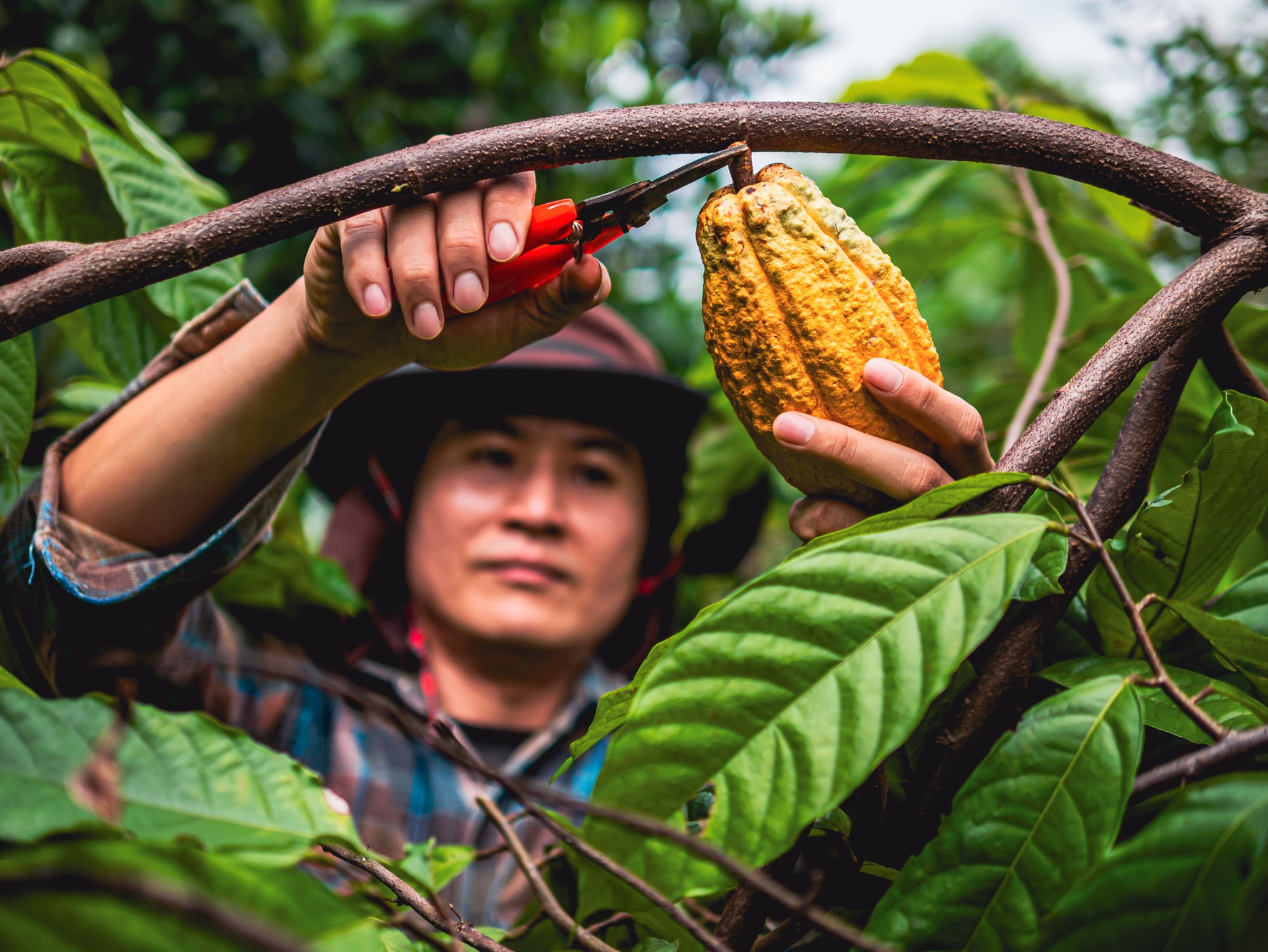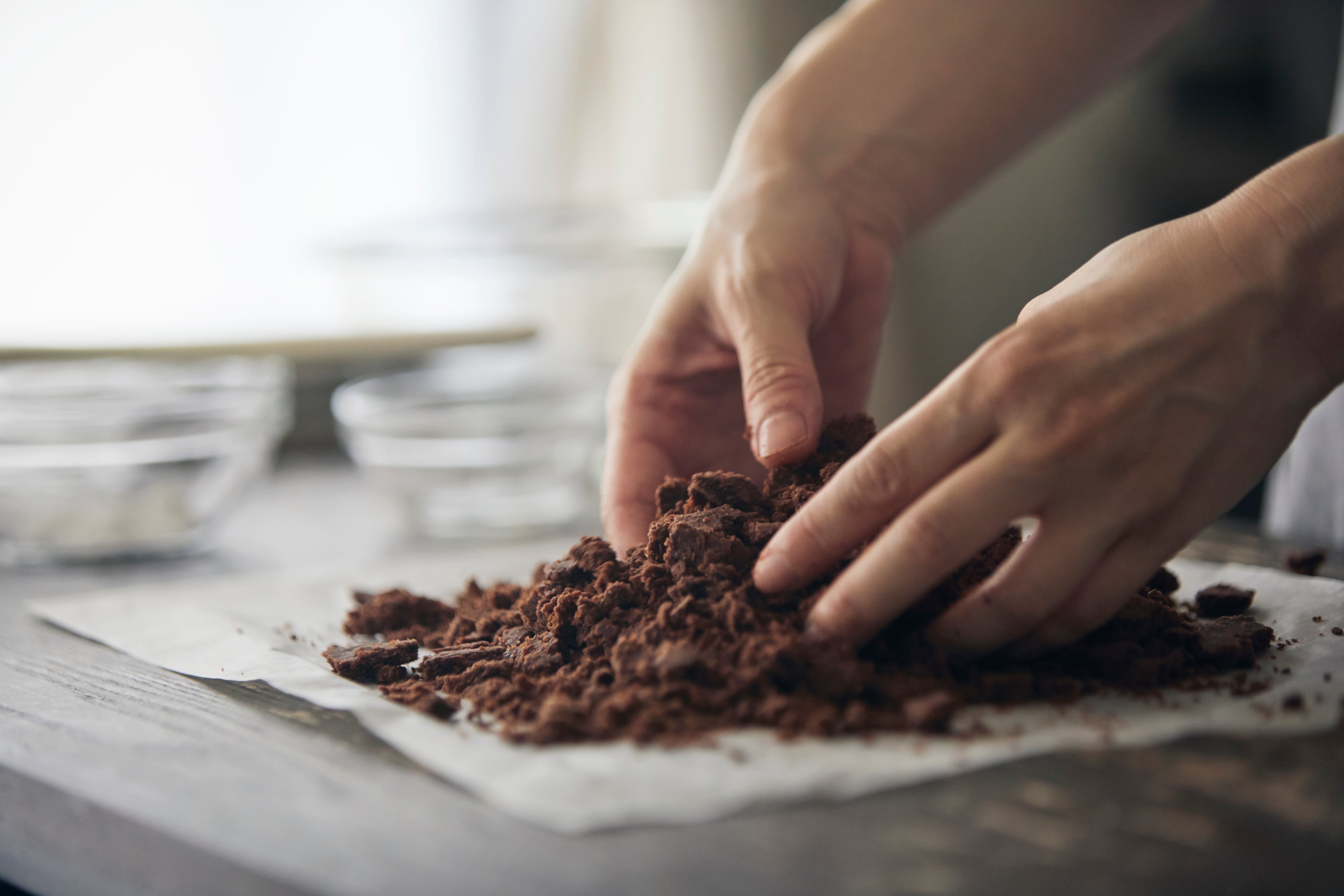Entering the global regulatory landscape in December 2025, the European Union’s Deforestation Regulation (EUDR) is anticipated to have far-reaching effects on the confectionery sector.
Nations and brands are updating their transparency, traceability and technological capabilities that support the introduction of the new law. With the EUDR’s implementation mandating companies’ sustainable focus and environmental actions, could confectioners soon update their labelling to reflect their EUDR-compliant operations?
EUDR’s impact on cocoa sourcing and confectionery supply chain
The EUDR doesn’t introduce new mandatory labelling requirements for cocoa-based confectionery goods. Instead, it ensures that any cocoa placed on the EU market is deforestation-free and fully traceable to its origin. “While some brands might voluntarily label their products ‘EUDR-compliant’ or introduce new certifications, that’s not required for the regulation itself,” says Julia Ocampo, VP of cacao sourcing and sustainability at Luker Chocolate.
Some brands are actively modifying their confectionery activities in preparation for the EUDR’s arrival. As of October 1, 2024, chocolate manufacturer and supplier Luker Chocolate has made 100% of its shipments to Europe EUDR-compliant. Developing its LukerTrace system, the brand provides verifiable traceability and evidence of zero deforestation or labour rights violations. “This level of transparency is what the EUDR requires – not a specific front-of-pack label for consumers,” says Ocampo.
Implementing traceability has also enabled brands to make meaningful contributions to sustainability. Luker Chocolate also states that the brand’s commitment to traceability has been significantly strengthened through its initiative, The Chocolate Dream. It aims to foster long-term partnerships with farmers, associations and communities, improving farmer income, protecting the environment, and strengthening local communities through education and entrepreneurship.
“These relationships have played a pivotal role in implementing robust traceability systems, ensuring that our cocoa is not only compliant but also contributes to lasting, positive change in cocoa-growing regions,” Ocampo adds.
How chocolate brands are preparing for the EU deforestation law
● Global confectionery company Barry Callebaut affirms its commitment to developing end-to-end traceability to pursue progress in building a sustainable and traceable cocoa and chocolate supply chain. It aims to deliver “best-in-class sustainability” to its global consumers.
● Chocolate factory Hames Chocolates anticipates that the arrival of the EUDR will lead to stricter sourcing standards, increased costs and compliance burdens, market opportunities and collaborative efforts. The brand states it is committed to sustainable sourcing and welcomes the introduction of EUDR. The SME’s deadline to be compliant with EUDR is June 30, 2026. “Our supply chain expects to be ready for EUDR before this time,” the brand states.
● Food manufacturer Silbury states it’s committed to complying with the EUDR. It says it is passionate about lowering its impact and has a robust ESG programme centred on its supply chains to take further action.
Pushing the environmental needle
Despite delays, the removal of the law’s ‘no risk’ status and doubts around the industry’s readiness, the sentiment among the wider confectionery sector is that the upcoming EUDR regulation will positively impact confectionery brands, sustainable actions and priorities, spurring progress. “The EUDR is a significant and important step forward for sustainability in the cocoa industry, ensuring that brands take full responsibility for the origins of chocolate in their products,” says Ocampo.
Companies’ cost of compliance has come under scrutiny the nearer the EUDR’s implementation date looms. New research from consultancy firm Profundo anticipates firms will spend an average of 0.1% on revenues, 1.45% of their operating profit, 1.89% of their net profit, 4.33% on employee costs and 58.77% on paying for their leaders’ wages.
Some chocolate manufacturers and brands will need to strengthen their traceability systems in the coming months to ensure they fully comply with the new deadline. Any delays in supplier’s compliance could potentially cause disruptions to product availability and higher costs associated with securing compliant chocolate at short notice.
Confectionery brands are working to ensure their supplier can provide verifiable, deforestation-free cocoa backed by complete traceability systems that meet the minimum EUDR requirements. “Beyond compliance, we hope to see brands embedding sustainability deeper into their sourcing strategies—by directly investing in the producers and communities that grow their cocoa,” Ocampo details.
Investment solutions company IDH puts forward the critical need for public and private sector collaboration, calling on industry players and leaders to execute and integrate comprehensive traceability systems, prioritise mechanisms to support due diligence requirements and devise effective policies.
Drivers and data behind the impact of EUDR
The push for greater supply chain accountability extends beyond EUDR alone. “Cocoa price volatility in the last 18 months has exposed deep-rooted issues in supply chains that will only worsen if we don’t take decisive action to integrate sustainability into decision-making in every production stage,” Ocampo continues.
New corporate sustainability regulations and rising consumer expectations mean transparency is no longer optional in today’s landscape. “Brands that fail to strengthen their sourcing commitments risk instability in their supply chain, higher costs, and even total exclusion from markets,” Ocampo adds.
Harnessing long-term resilience is a key approach for many confectioners, ensuring their supply chains are fair, sustainable and built to withstand volatility and market pressures. Fostering deep-rooted partnerships that enhance traceability and create a more sustainable and ethical cocoa industry for the future is vital.
For now, with costs and compliance demanding companies overhaul their supply systems, it seems that confectioners’ EUDR focus centres on traceability and technology to help it meet the new law’s due diligence requirements. However, labelling updates may allow brands to differentiate themselves in the ever-competitive market, as environmental consciousness grows.




